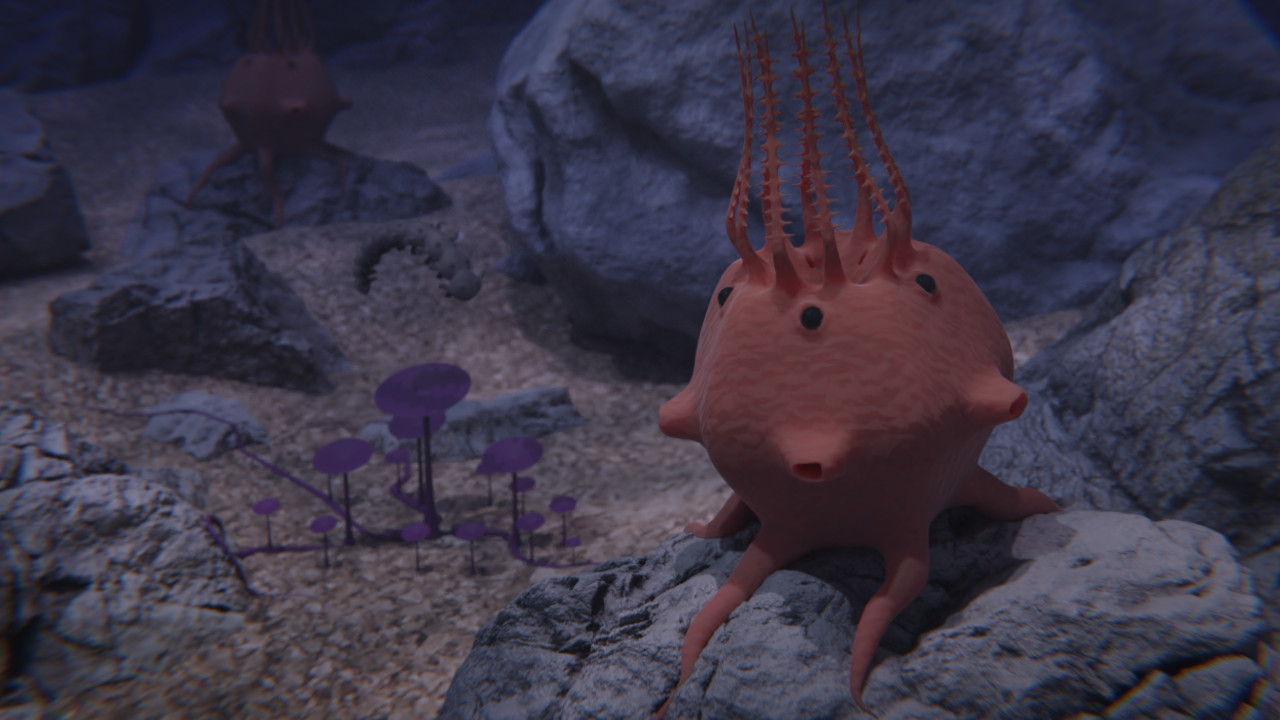Featherbarrel
The featherbarrel was a sessile filterfeader on the planet Almaishah. Featherbarrels lived lived about 480 million years go.
Basic Information
Anatomy
Featherbarrels are pentaradial filter feaders, they have 10 feeding fronds on the dorsal side surrounding a central mouth. They have five simple eyes, 5 water intakes between the tentacle ring and the central stomach, each of these leads to an outlet near the middle of the animal. Each outlet also has a paired set of gonads that release spermazoa and ova during spawning. These water channels also help draw food toward the mouth as well as barring internal cilia that are the primary surface for gas exchange. The two tentacles closest to each eye are controlled by a single ganglion which also receives signals from the eye. At the bottom of the animal the five tentacles exist primarily to anchor the animal to the the substrate, usually a rock. These tentacles are nearly non-existent in larvae, but grow as they transform into adults. The central stomach is blind, and undigested material is periodically ejected from the mouth, this is accompanied by a reversal of water flow through the water passages to help clear the waste. About half way between the bottom of the creature and the water outlet is a simple two chamber heart that pumps haemoglobin based blood through veins and arteries.
Genetics and Reproduction
Featherbarrels are diploid hermaphrodites that have quite distinct gametes. They broadcast spawn about every other full moon, although if times are lean for a particular organism it may forgo spawning as it conserves resources.
Growth Rate & Stages
They have 4 distinct life stages, one is a free floating sphere of cells, this then turns to larval stage one, where the animal is essentially a microscopic member of the zooplankton, and many are in fact eaten by featherbarrel adults during this stage. During this stage they primarily eat embryonic phytozoans, or single celled retinophyte relatives, assuming they grow large enough to swim against the current they then enter larval stage two. At this point they swim down and search for a rock, when they find one they settle down onto it, mouth up, and secret a glue, at this point they start growing their tentacles to adult proportions and then start feeding and growing isometrically, and usually begin spawning on their second year of adulthood.
Ecology and Habitats
Featherbarrels live in shallow to medium depth water becoming less common away from the tropics.
Additional Information
Perception and Sensory Capabilities
Featherbarrels are very sensitive to water currents, and they have some basic image forming ability allowing them to push away things that are too big to eat or wave their feeding fronds towards things small enough to eat. The feeding fronds also have substantial chemosensitivity, and they will wipe off things that seem inedible to avoid filling up the stomach.
EXTINCT
Genetic Descendants
Scientific Name
Plumoris rosea
Origin/Ancestry
Xenoradiata
Average Height
7.5 cm/3" without feeding fronds
Remove these ads. Join the Worldbuilders Guild











Comments